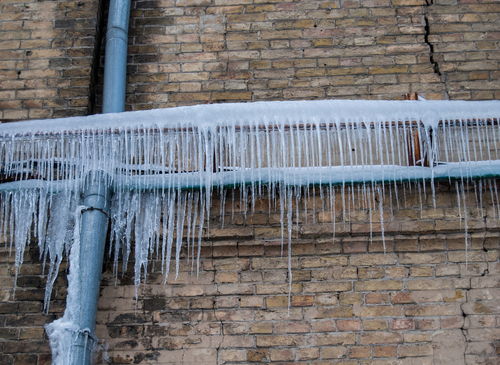Guidance for Avoiding Frozen Plumbing in Cold Weather: Specialist Tips
Guidance for Avoiding Frozen Plumbing in Cold Weather: Specialist Tips
Blog Article
The author is making a few great annotation related to Winter Plumbing Precautions: Preventing Frozen Pipes overall in the article on the next paragraphs.

Winter can ruin your plumbing, especially by freezing pipelines. Below's how to prevent it from happening and what to do if it does.
Intro
As temperature levels decline, the threat of frozen pipes increases, possibly leading to costly repair work and water damage. Understanding how to prevent icy pipelines is important for property owners in cold environments.
Comprehending Frozen Pipelines
What triggers pipes to ice up?
Pipelines freeze when exposed to temperatures below 32 ° F (0 ° C) for expanded durations. As water inside the pipelines freezes, it increases, taxing the pipeline walls and potentially creating them to burst.
Dangers and problems
Icy pipelines can result in water interruptions, property damage, and expensive repair work. Ruptured pipelines can flood homes and trigger considerable architectural damages.
Indicators of Frozen Pipes
Identifying icy pipelines early can stop them from bursting.
Just how to identify icy pipes
Try to find decreased water circulation from faucets, unusual odors or sounds from pipes, and noticeable frost on subjected pipelines.
Prevention Tips
Shielding susceptible pipes
Cover pipes in insulation sleeves or use warmth tape to secure them from freezing temperatures. Concentrate on pipes in unheated or external areas of the home.
Home heating strategies
Maintain indoor rooms appropriately heated, specifically locations with plumbing. Open closet doors to enable cozy air to circulate around pipes under sinks.
Shielding Exterior Plumbing
Garden hose pipes and exterior taps
Disconnect and drain garden hoses before wintertime. Install frost-proof spigots or cover outdoor faucets with shielded caps.
What to Do If Your Pipes Freeze
Immediate actions to take
If you think frozen pipelines, maintain faucets open up to alleviate pressure as the ice melts. Make use of a hairdryer or towels soaked in warm water to thaw pipelines slowly.
Long-Term Solutions
Structural adjustments
Take into consideration rerouting pipelines away from outside walls or unheated areas. Include additional insulation to attic rooms, basements, and crawl spaces.
Updating insulation
Purchase high-quality insulation for pipelines, attics, and wall surfaces. Proper insulation aids maintain constant temperature levels and reduces the danger of icy pipelines.
Conclusion
Stopping icy pipes needs positive procedures and fast responses. By recognizing the reasons, indications, and safety nets, home owners can shield their pipes during cold weather.
5 Ways to Prevent Frozen Pipes
Drain Outdoor Faucets and Disconnect Hoses
First, close the shut-off valve that controls the flow of water in the pipe to your outdoor faucet. Then, head outside to disconnect and drain your hose and open the outdoor faucet to allow the water to completely drain out of the line. Turn off the faucet when done. Finally, head back to the shut-off valve and drain the remaining water inside the pipe into a bucket or container. Additionally, if you have a home irrigation system, you should consider hiring an expert to clear the system of water each year.
Insulate Pipes
One of the best and most cost-effective methods for preventing frozen water pipes is to wrap your pipes with insulation. This is especially important for areas in your home that aren’t exposed to heat, such as an attic. We suggest using foam sleeves, which can typically be found at your local hardware store.
Keep Heat Running at 65
Your pipes are located inside your walls, and the temperature there is much colder than the rest of the house. To prevent your pipes from freezing, The Insurance Information Institute suggests that you keep your home heated to at least 65 degrees, even when traveling. You may want to invest in smart devices that can keep an eye on the temperature in your home while you’re away.
Leave Water Dripping
Moving water — even a small trickle — can prevent ice from forming inside your pipes. When freezing temps are imminent, start a drip of water from all faucets that serve exposed pipes. Leaving a few faucets running will also help relieve pressure inside the pipes and help prevent a rupture if the water inside freezes.
Open Cupboard Doors
Warm your kitchen and bathroom pipes by opening cupboards and vanities. You should also leave your interior doors ajar to help warm air circulate evenly throughout your home.

We had been shown that report on Prevent Frozen Pipes through a buddy on a different web blog. Do you know about another individual who is excited by 6 Ways to Prevent Frozen Pipes? Do not hesitate to share it. I cherish your readership.
Check It Out Report this page